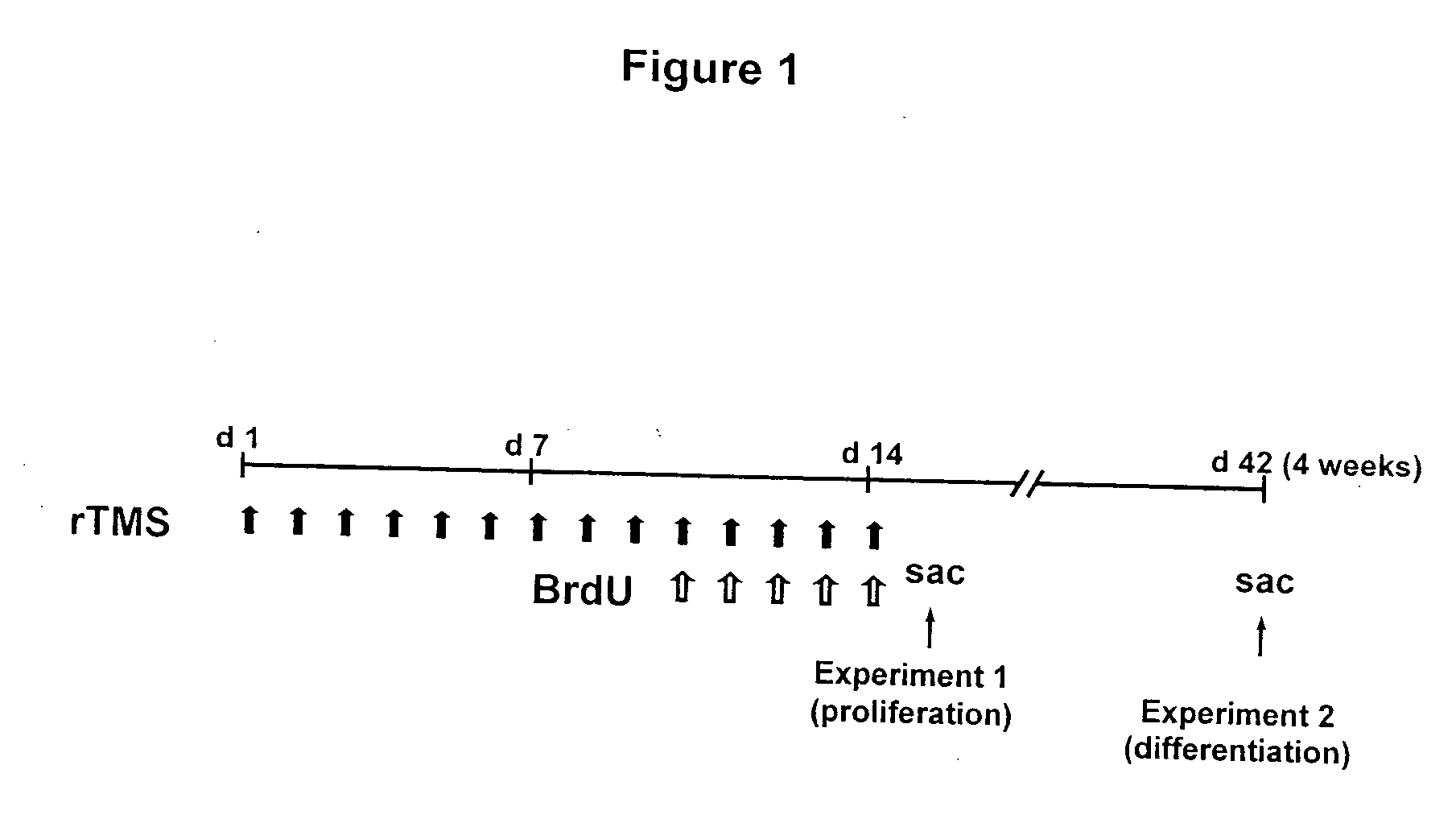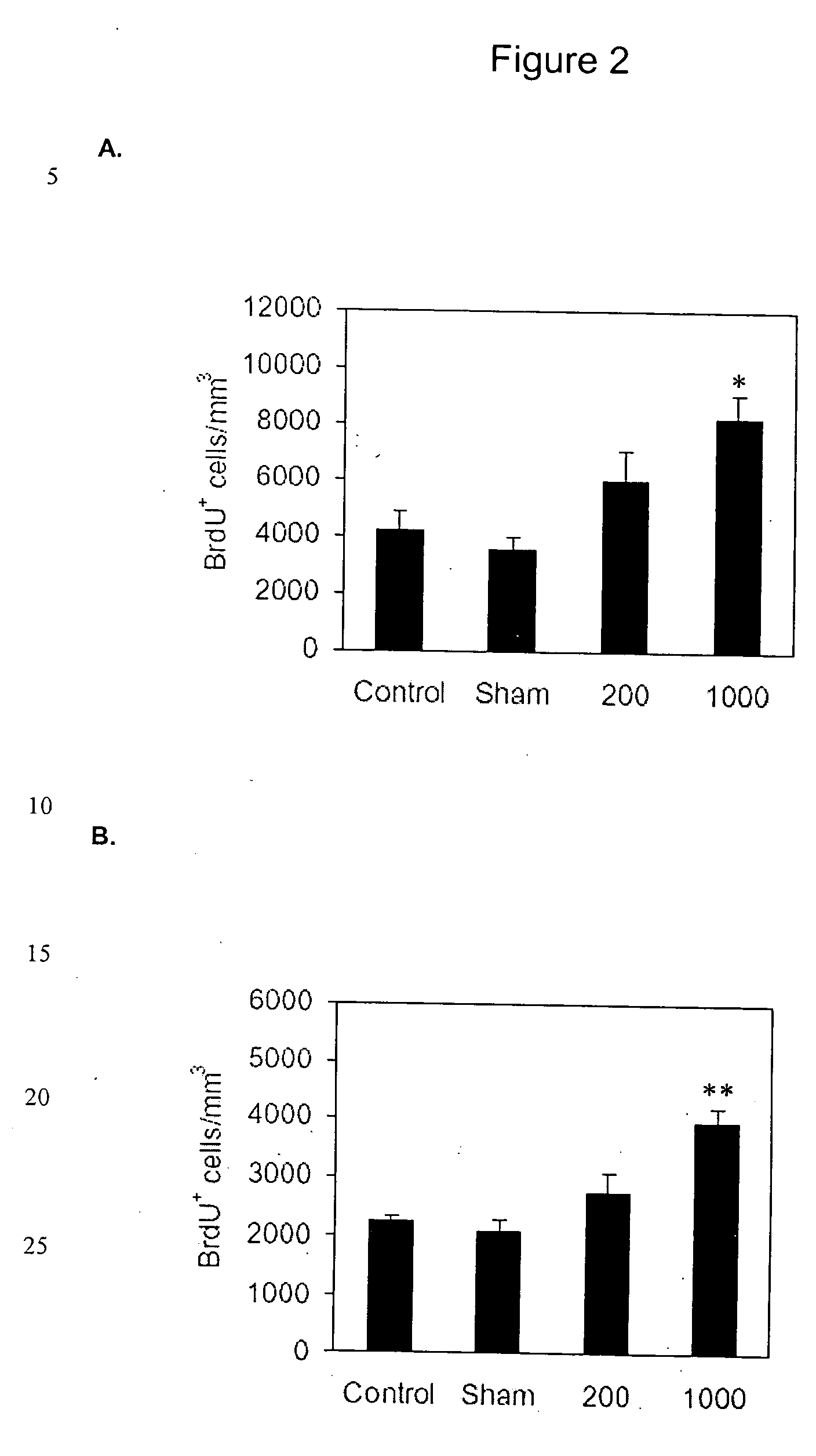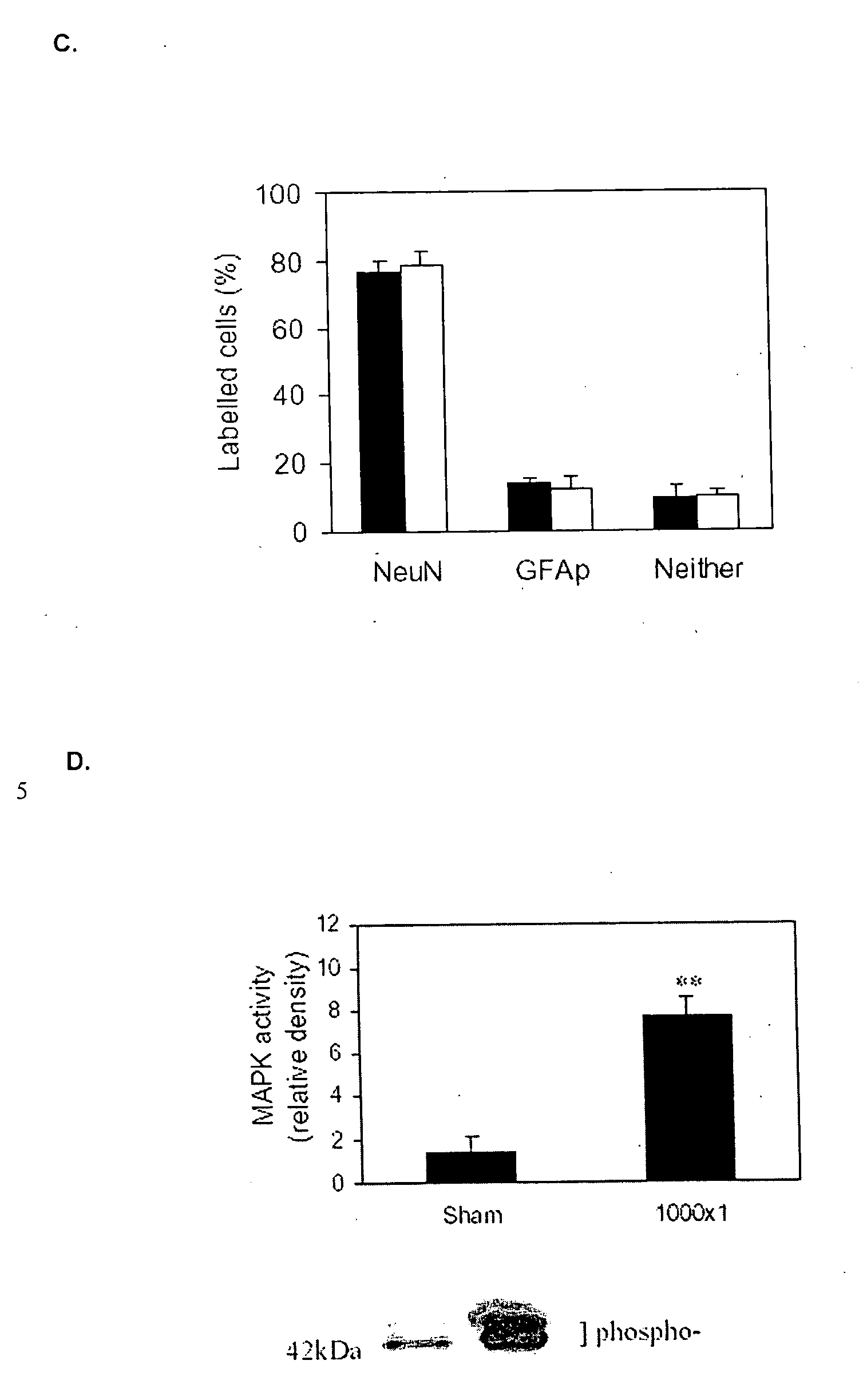Use of transcranial magnetic stimulation to improve memory and stress related syndromes in humans
a transcranial magnetic stimulation and human brain technology, applied in the field of pulsed magnetic fields, can solve the problems of burnout, unhappiness, powerlessness, cynicism, etc., and achieve the effect of improving memory
- Summary
- Abstract
- Description
- Claims
- Application Information
AI Technical Summary
Benefits of technology
Problems solved by technology
Method used
Image
Examples
example 1
[0049] Adult healthy male Sprague-Dawley rats weighting 350-450 g are stimulated once daily with 200 or 1000 rTMS pulses for 14 consecutive days. A 20 Hz stimulus frequency is delivered from a stimulator (Dantec by Dantec Dynamics Ltd. Bristol, U.K.). The waveform is biphasic with a pulse width of 280 microseconds and a stimulus intensity of 98 Ampere per microseconds. A figure-eight coil (winding radius 5 cm) is placed on the awaken rat at the vertex of the skull and the coil is held in direct physical contact to the animal's head. The rats are held by hand and the handle of the figure-eight coil is placed parallel to the vertebral column of the rat. The animals are allowed to adapt to the experimental procedure during a ten day period before the actual experiments are started. During the adaptation period the animals are exposed to gradually longer times in the experimental situation to get used to the rTMS stimuli handling. It is found that after the period of adaptation the anim...
example 2
[0052] The data from Experiment 1 shows an increase in hippocampal progenitor proliferation from rTMS stimulation the highest stimuli dose as compared to control and sham treated animals. We furthermore wanted to know if this increase in proliferation of progenitors results in a higher number of newborn cells that persists with time, and whether this will give rise to an increase of mature neurons in the hippocampus at a later stage. Three to four weeks is the time considered needed for maturation and integration of progenitors into functionally working granule neurons. In Experiment 2, four groups of rats are subjected to the same rTMS treatments as described above and the animals are then allowed to live for four weeks after the last rTMS stimulation (see paradigm in FIG. 1). In the first part of this experiment the brains are analyzed to find the amount of BrdU-positive cells in the GCL of hippocampus. In these animals the BrdU-immunoreactive cells are found throughout the whole ...
example 3
[0054] We next investigate if some intracellular signalling pathways known to be involved in neurogenesis in rats and believed by experts to be involved in humans could be stimulated by rTMS treatment. The p44 and p42 MAP kinases (Erk1 and Erk2) function in a protein cascade that plays a critical role in the regulation of cell growth. When rats are treated with 1000 pulses of rTMS there is an induction of p44 / p42MAPK protein levels from 1.36±0.78 to 7.69±0.87 (relative density; n=5.5; mean±SEM; p<0.001, t-test). Phosphorylated cAMP response element binding protein (pCREB) is a transcription factor acting downstream of MAPK, and which is recently demonstrated to be involved in the regulation of hippocampal neurogenesis 13,14. In particular, the cAMP-CREB cascade has been shown to be involved in the up-regulation of neurogenesis from antidepressants including ECT (M. Nibuya, Nestler E J, Duman R S. J. Neurosci. 16(7):2365 (1996)). One of the target genes for pCREB is brain derived neu...
PUM
 Login to View More
Login to View More Abstract
Description
Claims
Application Information
 Login to View More
Login to View More - R&D
- Intellectual Property
- Life Sciences
- Materials
- Tech Scout
- Unparalleled Data Quality
- Higher Quality Content
- 60% Fewer Hallucinations
Browse by: Latest US Patents, China's latest patents, Technical Efficacy Thesaurus, Application Domain, Technology Topic, Popular Technical Reports.
© 2025 PatSnap. All rights reserved.Legal|Privacy policy|Modern Slavery Act Transparency Statement|Sitemap|About US| Contact US: help@patsnap.com



